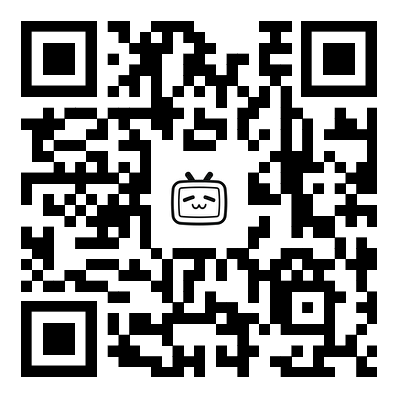作者:弗兰克·维尔切克 Frank Wilczek
翻译:吴飙
量子力学多方位地挑战了我们的想象力和拓展了我们的思维。在这里,我想讨论一个突出的例子:虚粒子。
严格按书面定义,虚粒子不是物理现实的一部分。我们说它们是“虚拟的”,而不是“真实的”,正是因为它们不是可以直接观察到的东西。当你对所观察到的粒子的行为进行理论计算时,有很多中间步骤。虚粒子事实上是对某些中间步骤的有益表述。然而,从更深层次来看,虚粒子是邀请我们用新的方式看待现实。也就是,我们应该尝试发现 - 或创造或发明 - 真实现象,让计算中的“虚拟”步骤得以显现。作为对虚拟现实的补充,我们应该创造真实的虚拟。
换个说法:经验表明,我们的方程往往比我们更聪明。因此,我们应该密切关注它们如何表达自己,并尝试逐字逐句解释它们。
夸克和胶子作为虚粒子,令人惊叹的成功。它们是强相互作用的基础理论量子色动力学(QCD)的主要成分。但是,从来没有人观测到过单独的夸克或胶子。事实上,该理论预言了永远没有人会观测到它们!当我们求解 QCD 方程时,我们发现可观测到的强子(即强相互作用粒子,如质子、中子、π介子和它们的许多亲戚)都是由夸克和胶子按确定的方式组合成的复合体。这样,通过一层隐藏的粒子,QCD 对真实粒子及其特性提供了一个非常成功的定量描述。
不过,这个故事还有一个美丽的后续。通过聪明才智和创造力,我们终究还是 “看到”了单个的夸克和胶子!不过,我们看到的不是“原生”的粒子形式,而是能量和动量的流。更准确地说:在高能质子(或电子和正电子,或其他产生大量强子的反应)碰撞之后,观察到的粒子并不是随机地向所有方向飞出。相反,它们被组织成一些狭窄的粒子“喷注”,朝着同一个方向运动。
根据 QCD 的基本方程,从底层看,这种对撞直接产生的是虚夸克和胶子,然后才转化为(真实的)强子。而让虚拟成真的关键事实是,在转化过程中能量和动量是守恒的。因此,夸克和胶子的能量和动量会被印记在它们转化成的强子流上。换句话说,如果我们只关注能量和动量,“喷注”实际上就是夸克和胶子。我们对于产生虚拟粒子的详细理论预测 - 它们的丰度以及它们运动方向和总能量的“天线模式” - 都以惊人的忠实度反映在关于喷注的真实数据中。
在量子理论的最深层面上,这是互补原理的一个例子:截然不同的概念可能适用于回答同一个物理现象的不同问题。
量子互补原理最著名的例子是波粒二象性。非常粗略地说,它认为波的概念更适合回答关于位置的问题(它在哪里?) - 而粒子概念更适合回答关于动量的问题(它具有多大冲击力?)
将这种描述的模糊性称为位置-动量二象性更为准确。海森堡不确定性原理为位置不确定性和动量不确定性的乘积设定了一个严格的下限。它以精确的方式告诉我们,我们需要不同的工具来解决这些问题,因为我们无法同时回答这两个问题。
对于虚粒子来说,最相关的是时间-能量不确定性,它给时间和能量的不确定性乘积设定了一个基本的严格下限。如果我们想精确地回答有关能量的问题,就必须牺牲时间的精确性,具体来说,我们必须关注长时行为,与真实、寿命长的粒子打交道。 另一方面,如果我们想获得极短时间内发生的事情的准确信息,虚粒子则是正确的概念工具。一旦短时事件在长时结果上留下了清晰印记,真实虚拟就出现了。
前面,我侧重讨论了虚粒子—特别是夸克和胶子—以及 QCD 物理。 然而,时间-能量互补性的深层逻辑贯穿整个量子世界。最近,它以“飞秒物理学”和它更极端的兄弟“阿秒物理学”的名义出现在原子和分子物理学(AMO)的研究前沿。
几十年来,AMO 物理学家和物理化学家一直使用过渡态的概念来描述反应中未观察到的中间步骤。这与虚粒子的概念基本相同,只是工作尺度不同而已。(事实上,人们有时把它们称为“虚拟态”)。这些基于脉冲激光发展出来的新技术可以探测极短时间间隔内的行为。在量子世界中,在不久前还被认为奇幻(“虚拟”)和纯理论的东西,现在也变得非常真实和具体。
注:我在最近发表的论文"QCD 50: Golden Anniversary, Golden Insights, Golden Opportunities"中,对这里一些观点进行了更长和更技术性的阐述,您可以在这里找到这篇论文。
https://arxiv.org/pdf/2403.06038.pdf
英文原文:
Real Virtuality: A Frontier of Quantum Imagination
Quantum mechanics offers us many opportunities to challenge our imaginations and expand our minds. Here I’d like to discuss an outstanding example of that: the concept of “virtual particles”.
Narrowly considered, virtual particles are, almost by definition, not part of physical reality. We say that they are “virtual”, as opposed to “real”, precisely because they are not things you observe. Rather, they are helpful representations of the intermediate steps in theoretical calculations of the behavior of the particles you do observe.
More profoundly, however, virtual particles are an invitation to look at reality in new ways. The idea is that we should try to discover – or create or invent – real phenomena that bring to light the “virtual” steps in our calculations. As a complement to virtual reality, we should make real virtuality.
Putting it another way: Experience shows that our equations are often smarter than we are. Therefore, we should pay close attention to how they express themselves, and we should try to interpret their language literally.
Quarks and gluons are spectacularly successful virtual particles. They are the primary ingredients in the equations of quantum chromodynamics (QCD), the fundamental theory of the strong nuclear force. But no one has ever observed an individual quark or gluon. Indeed, the theory predicts that no one ever will! When we solve the equations of QCD, we find that the observable hadrons (i.e., strongly interacting particles, such as protons, neutrons, pions, and their many relatives) get built up from specific, intricate combinations of quarks and gluons. In this way, QCD provides a very successful, quantitative description of real particles and their properties founded upon a hidden layer of virtual particles.
But there’s a beautiful supplement to that story. Given some cleverness and creativity, we can manage to “see” individual quarks and gluons after all! We see them, however, not in the crude form of particles, but as flows of energy and momentum. More precisely: In the aftermath of collisions of high-energy protons (or of electrons and positrons, or in other reactions that produce large numbers of hadrons), the observed particles don’t emerge randomly in all directions. Rather, they are organized into a few narrow “jets” of particles that move in the same direction.
According to the basic equations of QCD, the underlying structure of such collisions is that they produce virtual quarks and gluons, which subsequently turn into (real) hadrons. And the key fact, which powers real virtuality, is that in the process of transformation energy and momentum are conserved. Thus, the energy and momentum of the quarks and gluons get imprinted on the flows of the hadrons they turn into. In other words, if we keep focused on energy and momentum, the “jets” in effect are the quarks and gluons. Our detailed theoretical predictions for producing virtual particles – their abundances and the “antenna patterns” of their directions and overall energy – are reflected, with startling fidelity, in real data about jets.
At the deepest levels of quantum theory, what is happening here is an example of complementarity: radically different concepts might be appropriate to answering different questions about the same physical phenomenon.
The most famous example of quantum complementarity is wave-particle duality, which very roughly speaking says that wave concepts are most useful in answering questions about position (Where is it?), while particle concepts are most useful in answering questions about momentum (How impactful is it?).
It would be more accurate to call this ambiguity of description position-momentum duality. Heisenberg’s uncertainty principle puts a strict lower limit on the product of uncertainties in position and momentum. It tells us, in a precise way, that we need different tools to address those questions, because we can’t answer both simultaneously.
For virtual particles, what’s most relevant is time-energy uncertainty. Basically, this puts a strict lower limit on the product of uncertainties in time and energy. If we want to answer questions about energy precisely, we must sacrifice precision in time. Specifically, we must focus on the long run, and work with real, lasting particles. On the other hand, if we want to get accurate information about what happens over very short times, virtual particles can be the right conceptual tool. Real virtuality happens when short-term events leave clear imprints on long-term outcomes.
In the preceding discussion I mainly focused on virtual particles – specifically, quarks and gluons – and the physics of QCD.The deep logic of time-energy complementarity holds throughout the quantum world, however. Recently it has emerged as a frontier of atomic and molecular (AMO) physics, under the names “femtosecond physics” and its more extreme cousin “attosecond physics”.
For decades AMO physicists and physical chemists have used the concept of transition states to describe unobserved intermediate steps in reactions. This is essentially the same concept as virtual particles, at work on a different scale. (Indeed, people sometimes refer to “virtual states”.) New technologies based on pulsed lasers allow experimenters to probe behavior over very short time intervals. Here too what was recently considered a somewhat fanciful (“virtual”) and theoretical aspect of the quantum world is becoming real and tangible.
Note: I gave a lengthier and more technical exposition of some of these ideas in my recent paper “QCD at 50: Golden Anniversary, Golden Insights, Golden Opportunities”, which you can access at https://arxiv.org/pdf/2403.06038.pdf.



